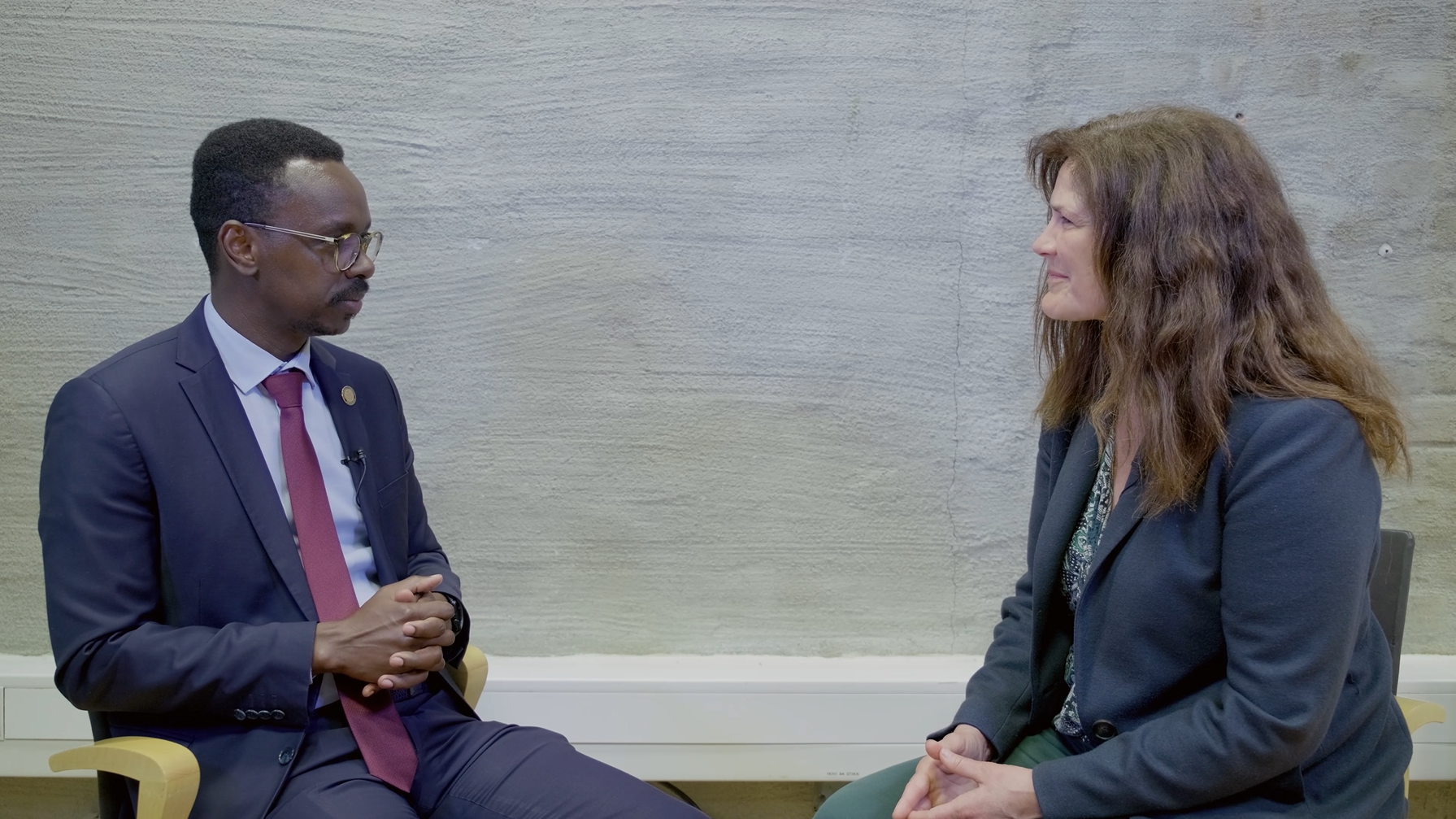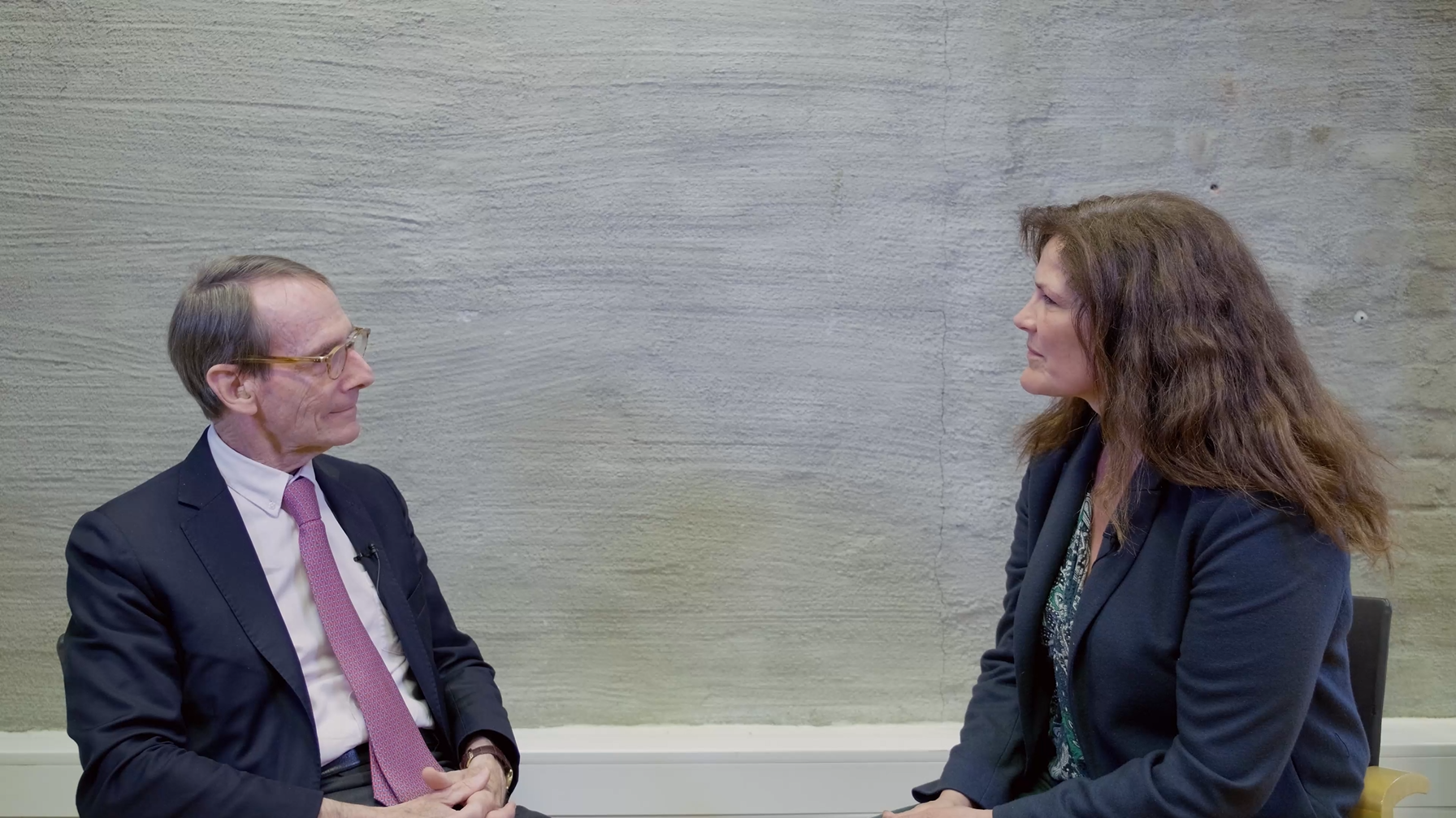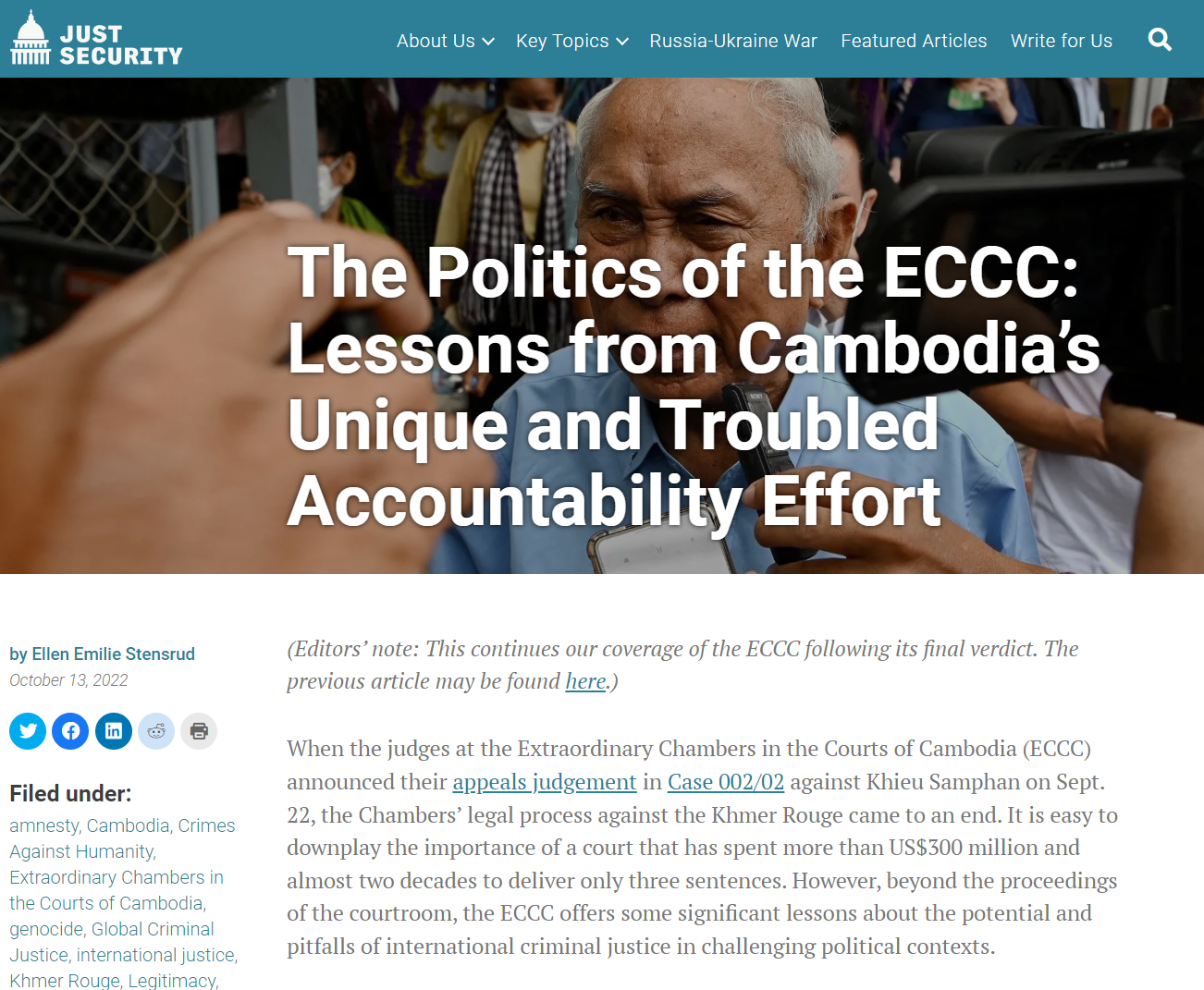
Genocide and Mass Atrocities
What are mass atrocities? What is genocide? Why do these concepts and their definitions matter?
To learn more about the definition, perpetration, and history of mass atrocities, check out the blogposts/information below.
Mass atrocities encompass the crimes of genocide, crimes against humanity, war crimes, and ethnic cleansing. According to the UN, atrocities are considered “the most serious crimes against humankind”, affecting “the core dignity of human beings”.
These crimes share the use of large-scale violence but differ in their legal definitions and how they are addressed. They are collectively referred to as atrocity crimes, and are legally defined by the 1948 Genocide Convention, the 1949 Geneva Conventions, and the Rome Statute of the International Criminal Court.
On this page, we take a closer look at mass atrocities, focusing on large-scale, one-sided attacks on civilians. Here we also present the concept of genocide, its different definitions and related challenges.
Mass atrocity crimes
In international law, the four mass atrocity crimes are genocide, crimes against humanity, war crimes, and ethnic cleansing. Each is different in its nature and in its required response, but it can be hard to distinguish between them when atrocities are ongoing.
-
Genocide is often seen as the gravest atrocity crime. This atrocity legally consists of “acts committed with intent to destroy, in whole or in part, a national, ethnical, racial or religious group, as such”, but there are challenges to the legal definition.
For an in-depth focus on genocide, read more below.
-
Crimes against humanity partly overlap with genocide, as they are acts “committed as part of a widespread or systematic attack directed against any civilian population”. They do not require the victims to belong to a certain group, or the attacks to be motivated by group identity. Crimes against humanity can be prosecuted by the International Criminal Court (ICC), but the term does not have the same political impact as genocide. These criminal acts include murder, rape, imprisonment, enforced disappearances, enslavement, sexual slavery, torture, apartheid, and deportation.
-
War crimes are violations of the laws of war, legally established by the Geneva Conventions to regulate and prosecute illegal acts during wartime. Breaches of the Geneva Conventions, violations of international laws of armed conflict, and violence targeting innocents and civilians can all amount to war crimes, according to the Rome Statute of the ICC.
-
Ethnic cleansing often refers to policies meant to render an area ethnically homogeneous, or to the forced deportation of a group. The term, however, is not legally defined. It is often used to describe attacks on a group where it is uncertain whether the threshold for genocide has been reached, or if actors wish to sound the alarm about massive attacks on civilians but are hesitant to use the more consequential term of genocide. Criminal prosecution will usually fall under the ICC’s provision on deportation or forced transfer of populations, which are crimes against humanity.
How Are Mass Atrocities Connected?
The four mass atrocities are considered to be the most serious of crimes, affecting all of mankind. They are therefore deemed international crimes. While all atrocities are distinct, they are bound together by the international pledge to protect civilians from them, formulated in the Responsibility to Protect (R2P) doctrine. (Read more about Mass atrocity prevention here.)
They also overlap legally. Atrocities can often fall under the category of “persecution”, defined in the Rome Statute of the ICC as the “intentional and severe deprivation of fundamental rights contrary to international law by reason of the identity of the group or collectivity” (art 7, para 2, g). The act of mass killing is another common feature, although it is not required for attacks to be categorized as atrocity crimes – even genocide.
It is important to remember that atrocity crimes can be predicted through careful monitoring and early warning, meaning they can be prevented by acting in a timely manner. When atrocities are ongoing it is often impossible to distinguish between them, which calls for a broad approach to atrocity prevention. While patterns of civilian violence may emerge, whether they amount to war crimes, crimes against humanity or genocide may only be decided in court years later.
What is Genocide?
Few concepts have as much political and symbolic power as the word “genocide”. The term was coined during World War II to embrace the destruction of groups on the basis of who they are and was used to describe the destruction of European Jewry and groups such as the Roma people.
If many people belonging to the same group are intentionally killed, this extensive violence is often called genocide. The word itself reflects this, as it is composed from “génos”, Greek for family or kind, and “caedō”, Latin for kill.
The legal definition of genocide was established by the 1948 Convention on the Prevention and Punishment of the Crime of Genocide (the Genocide Convention) (for more definitions, see Different definitions of Genocide). It is much narrower than how the concept was initially understood by Raphael Lemkin, who advocated for the outlawing of genocide. The legal definition criminalizes “acts committed with intent to destroy, in whole or in part, a national, ethnical, racial or religious group, as such”, such as:
Killing members of the group;
Causing serious bodily or mental harm to members of the group;
Deliberately inflicting on the group conditions of life calculated to bring about its physical destruction in whole or in part;
Imposing measures intended to prevent births within the group;
Forcibly transferring children of the group to another group.
Recognizing genocidal intent in acts against civilians is a crucial step in order to prosecute perpetrators in a court. This special intent means that groups must be targeted for destruction solely because of their group identity, setting a high threshold for atrocities to actually amount to genocide. If intent cannot be proven, mass violence may fall under different categories, such as crimes against humanity, and be punished as such.
Different definitions of genocide
The concept of genocide and the Genocide Convention have their origins in legal activism, and the driving force in this activism, Raphael Lemkin, saw genocide as a broader concept linked to colonialism and the eradication of cultures. However, the Convention was shaped by existing political realities. In 1948, the newly established United Nations wrote and adopted the Genocide Convention only when its great powers settled on a definition that did not target their own mistreatment of various groups, within their own societies or in warfare. This narrow definition of genocide applied only to some cases of mass killing, rather than all.
Strict requirements, broad solutions
The definition of the term “genocide” is thus purposefully complicated. In addition to the strict legal criteria of the Convention, international courts have set the threshold for a genocide conviction high: a case can only be genocide if there are no other reasonable explanations for attacks on civilians. It is particularly challenging to demonstrate the existence of a special genocidal intent, since different motives such as eradication of a group and military defeat may exist side-by-side.
The Genocide Convention is also limited to four protected groups: national, ethnical, racial, and religious, excluding political, gendered, and sexuality-based groups as potential victims. Acts of genocide also focus on physical destruction, dismissing the eradication of group identity, or “cultural genocide”, as well as forcible transfer and ethnic cleansing.
The strict requirement of genocidal intent and limitations of victim groups have created a need for broader definitions. This is especially the case for scholars who want to understand the phenomenon of eradication of groups, and activists who want to prevent such atrocities. Within genocide studies and genocide prevention, multiple non-legal definitions have been proposed throughout the years (via Wikipedia), attempting to correct the weaknesses of the legal definition. Alternative definitions can help understand genocide as a social practice, the stages of gradual dehumanization, exclusion and eradication, and the targeting of various groups.
Defining genocide, according to Ernesto Verdeja, is typically done in one of four ways, depending on their goal and audience. Beyond the legal definition provided by the Convention, each approach focuses on a different aspect:
Researchers tend to focus on causal explanation, less on proving intent, and tend to include victim groups beyond those in the definition.
Activists and international political actors use the term to identify mass violence, encouraging intervention and prevention responses.
The general public focuses on the emotional weight of these acts, deemed immoral, unacceptable, and in need of being stopped.
Gender and genocide
Genocides, like all mass atrocities, have strong gender dimensions. Which perpetrators commit genocide and against which victims, as well as how the crimes are addressed by outside actors, are influenced by gendered dynamics and socio-cultural norms.
Some genocides have been carried out in explicitly gendered ways, weaponizing sexual- and gender-based violence as a purposeful violent tactic. This has been the case for the Rwandan genocide directed against the Tutsi and the systemic sexual violence in the Bosnia in the 1990s.
Among all atrocity crimes, genocide can have a particular gender dimension due to perpetrators’ goal of destroying groups. For instance, genocidal violence can target the victim groups’ ability to reproduce – destroying group survival in the long run. The importance of reproduction as part of group survival is even recognized by the Genocide Convention, which identifies “measures intended to prevent births within the group” and “forcibly transferring children of the group to another group” as acts of genocide.
Gender can manifest at all levels of a genocide. For example, gender can influence the language used to rally and mobilize perpetrators, any sexual violence committed (be it gender-specific or gender-blind), which group is chosen as victims, and even who is granted agency as a perpetrator or peacemaker. Similarly, gender norms are created and reinforced to normalize violence and justify the need to commit certain crimes.
A common narrative used to mobilize male perpetrators is the protection of their group’s women from an existential threat, while women’s mobilization typically relies on their role as community heads and mother figures. Sexual violence is similarly used to hurt groups and individuals: due to cultural norms victims are often shamed and rejected by their community, and by impregnating opposing groups’ women perpetrators can forcefully affect the ethnic composition of a group. Consequently, these atrocities also affect the next generation of children born of this violence.
Naturally, there are many examples of people defying these strict roles and narratives, challenging basic and binary understandings of gender and genocidal intent. Which groups are deemed vulnerable or violent is often determined by essentialist gender norms, so having a nuanced outlook on how mass violence is committed and who can commit it is crucial.
“Gendercide”
The prevalent and repeated presence of gendered acts and rhetoric in mass violence led to a term being coined: gendercide. According to Mary Anne Warren, “gendercide is the systematic killing of members of a specific gender”, and “is often a component of a wider genocide”. This term has been met with both criticism and praise: although it may obscure deeper intersecting dynamics in favor of a reductive understanding of mass violence, it adds a more nuanced outlook on perpetration and victimhood than a gender-blind analysis of mass violence.
Additional readings:
-
Academic articles and books:
Hinton, Alexander Laban. 2012. “Critical Genocide Studies.” Genocide Studies and Prevention: An International Journal 7 (1). https://digitalcommons.usf.edu/gsp/vol7/iss1/3/.
Jones, Adam. 2024. Genocide: A Comprehensive Introduction. 4th ed. London; New York: Routledge, Taylor & Francis Group.
Schabas, William A. 2009. Genocide in International Law: The Crimes of Crimes. 2nd ed. Cambridge, U.K.: Cambridge University Press. https://doi.org/10.1017/CBO9780511575556.
Straus, Scott. 2001. “Contested Meanings and Conflicting Imperatives: A Conceptual Analysis of Genocide.” Journal of Genocide Research 3 (3): 349–75. https://doi.org/10.1080/14623520120097189.
Straus, Scott. 2016. Fundamentals of Genocide and Mass Atrocity Prevention. Washington, D.C: United States Holocaust Memorial Museum. https://www.ushmm.org/m/pdfs/Fundamentals-of-Genocide-and-Mass-Atrocity-Prevention.pdf.
Legal instruments and definitions:
International Criminal Court. 1998. “Rome Statute of the International Criminal Court.” https://www.icc-cpi.int/sites/default/files/2024-05/Rome-Statute-eng.pdf.
United Nations. 1948. “Convention on the Prevention and Punishment of the Crime of Genocide.” United Nations. United Nations. https://www.un.org/en/genocideprevention/documents/atrocity-crimes/Doc.1_Convention%20on%20the%20Prevention%20and%20Punishment%20of%20the%20Crime%20of%20Genocide.pdf.
United Nations. 2022. “Definitions of Genocide and Related Crimes.” United Nations. 2022. https://www.un.org/en/genocide-prevention/definition.
Current debates:
Ongoing wars, particularly the current violence in Gaza and in Ukraine, have put debates about the genocide definition to the forefront of international politics and advocacy. The debate has highlighted the challenges of meeting the strict criteria for genocide in ongoing conflicts, discussed in pieces such as these:
Bartov, Omer. 2023. “What I Believe as a Historian of Genocide.” New York Times, November 11, 2023. https://www.nytimes.com/2023/11/10/opinion/israel-gaza-genocide-war.html.
Bartov, Omer. 2024. “As a Former IDF Soldier and Historian of Genocide, I Was Deeply Disturbed by My Recent Visit to Israel.” The Guardian, August 13, 2024. https://www.theguardian.com/world/article/2024/aug/13/israel-gaza-historian-omer-bartov.
Moses, Dirk. 2023. “More than Genocide.” Boston Review, November 14, 2023. https://www.bostonreview.net/articles/more-than-genocide/.
Narea, Nicole, and Sigal Samuel. 2023. “How to Think through Allegations of Genocide in Gaza.” Vox. November 13, 2023. https://web.archive.org/web/20240709145636/https:/www.vox.com/world-politics/2023/11/13/23954731/genocide-israel-gaza-palestine.
Stensrud, Ellen E. 2024. “Genocide in Gaza?” Mass Atrocity Responses (blog). November 20, 2024. https://www.massatrocityresponses.com/blog/genocideingaza.
Straus, Scott. 2022. “Genocide in Ukraine: What Are the Roots of the Debate?” JusticeInfo.net, May 13, 2022. https://www.justiceinfo.net/en/92081-genocide-in-ukraine-roots-debate.html.








